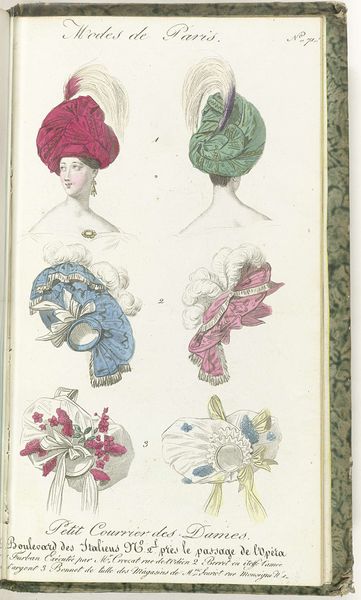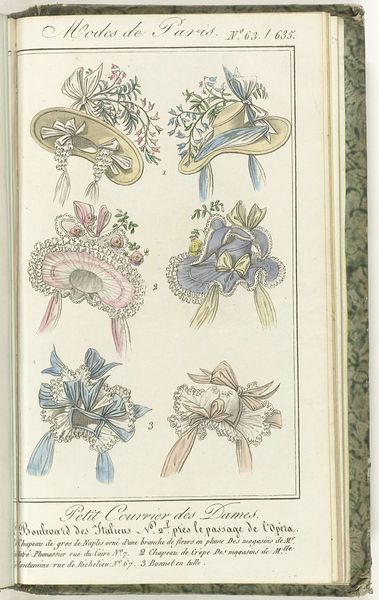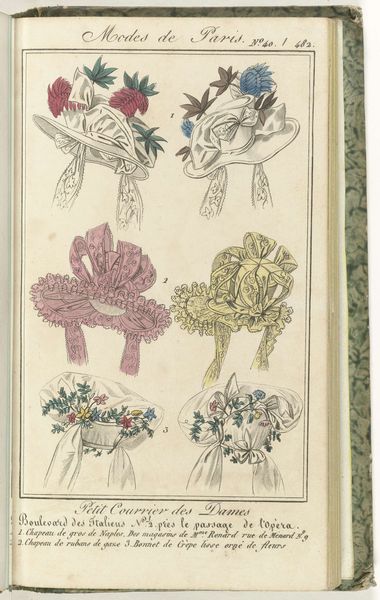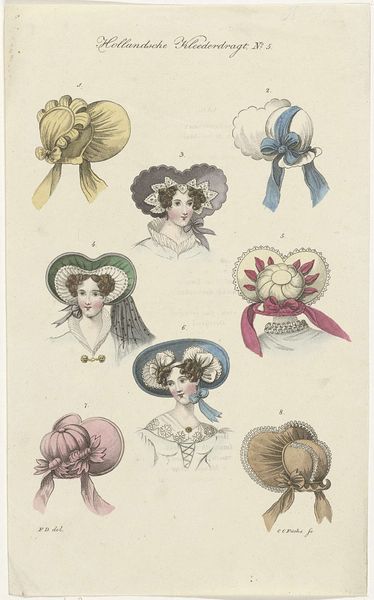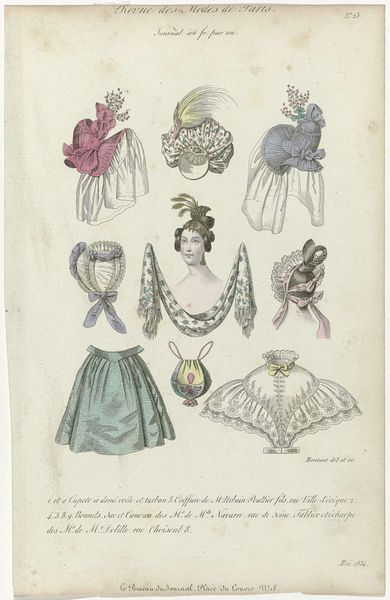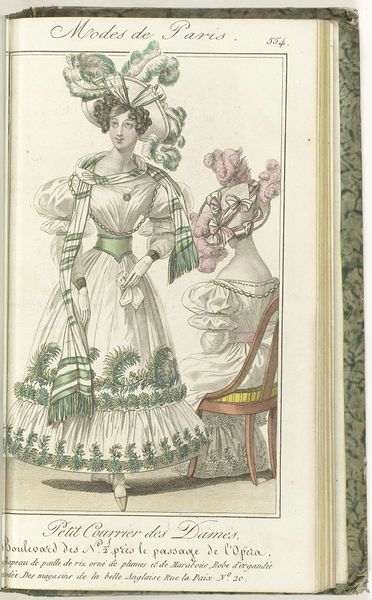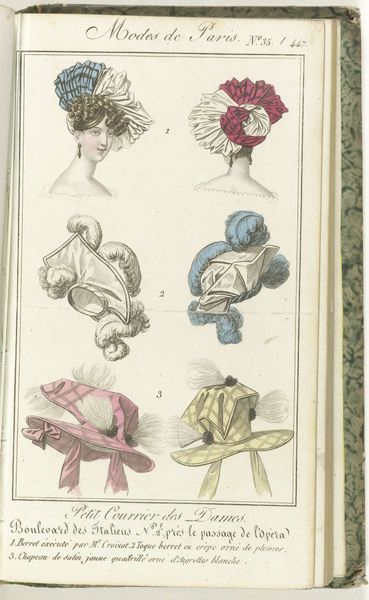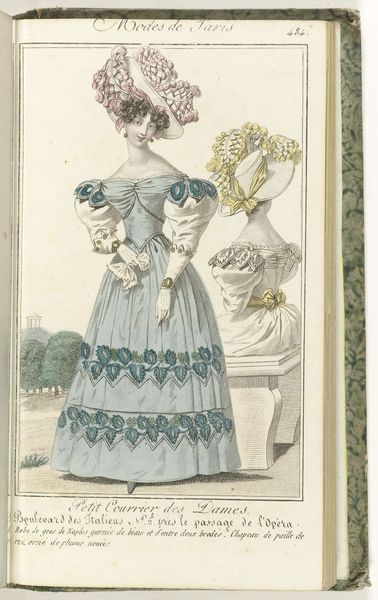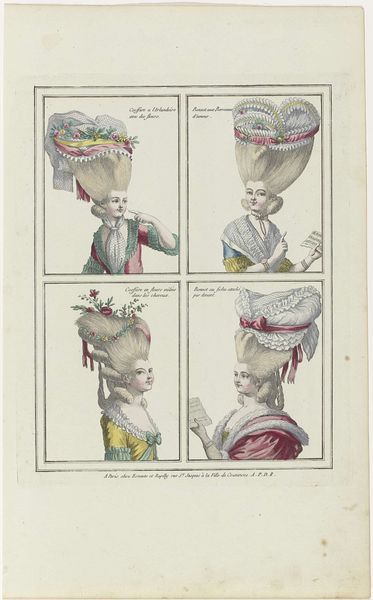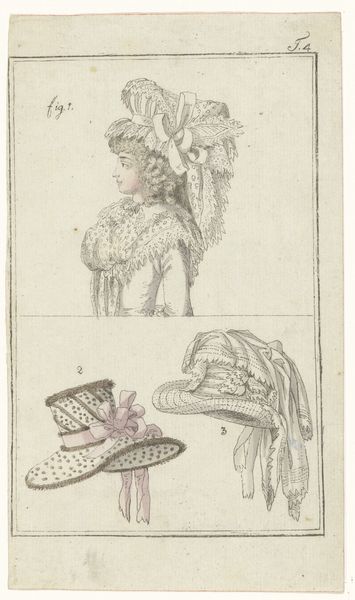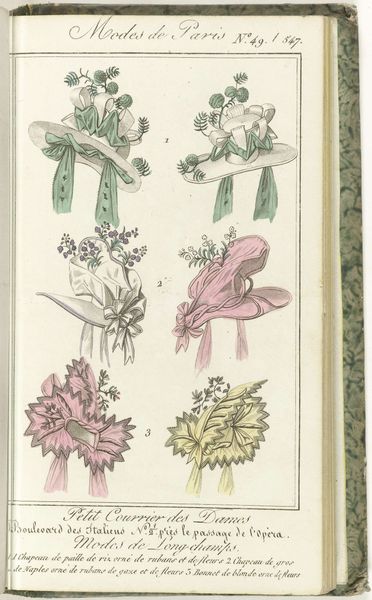
Petit Courrier des Dames, 1830, No. 72 / 707 : Coiffure Exécutée Par M.r Brasseur... 1830
0:00
0:00
anonymous
Rijksmuseum
drawing, print, ink
#
portrait
#
drawing
# print
#
ink
#
romanticism
#
genre-painting
Dimensions: height 201 mm, width 113 mm
Copyright: Rijks Museum: Open Domain
Editor: Here we have "Petit Courrier des Dames, 1830, No. 72 / 707 : Coiffure Exécutée Par M.r Brasseur..." by an anonymous artist. It's an ink and print drawing from the Rijksmuseum. What strikes me immediately is the elaborate nature of the hairstyles and bonnets. What can you tell me about it? Curator: This print offers a fascinating glimpse into the socio-cultural landscape of 1830s Paris, a time of significant social and political change following the Bourbon Restoration. It’s more than just a fashion plate; it’s a document reflecting the aspirations and identities of women in a specific societal sphere. Note the title “Petit Courrier des Dames” and the address near the Opera – suggesting this publication served a privileged, opera-going clientele. What does that suggest to you about its intended audience? Editor: It speaks to an affluent audience, eager to showcase status through their attire, right? Perhaps, fashion served as a form of social currency for them? Curator: Precisely. These weren’t merely aesthetic choices; they were declarations of social standing. Think about the time, class distinctions were rigidly enforced. A publication like this contributed to those demarcations by setting standards of taste and aspiration for a particular segment of society. Consider the implications of 'anonymous' authorship; why do you suppose it’s not attributed to an individual artist? Editor: Maybe it wasn't about the artist, but about the publication itself, becoming a brand that embodied Parisian fashion? Curator: An astute observation. It’s about constructing a visual narrative that reinforces social hierarchies. The "Modes de Paris" aren't simply hairstyles, but visual markers within a power structure, shaping ideas around gender, class and public appearance. Editor: So, analyzing it beyond face value unveils hidden insights into the politics of appearance and the power dynamics of 19th-century Parisian society. I never looked at fashion plates this way before! Curator: Indeed. Analyzing seemingly superficial artworks through a historical lens, we unveil how they reflected, reinforced, and were shaped by contemporary societal forces.
Comments
No comments
Be the first to comment and join the conversation on the ultimate creative platform.


